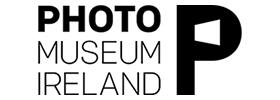
Emma Spreadborough »
You Mustn’t Go Looking
Exhibition: 29 Apr – 29 Jun 2025
Thu 1 May 18:00

PHOTO MUSEUM IRELAND
Meeting House Square
D02 X406 Dublin
+353 (0)1-6714654
info@photomuseumireland.ie
photomuseumireland.ie
Tue-Sat 11-17

Photo Museum Ireland is delighted to present the first solo Irish exhibition of Emma Spreadborough’s You Mustn’t Go Looking, an imaginative body of work that draws on the remnants of ancient tradition to address contemporary experience in Northern Ireland. Spreadborough takes inspiration from the writing of Brian Friel and his concern for the magical past in Ireland’s present-day culture. Friel’s play, Dancing at Lughnasa, explores Ireland’s mix of religion and politics and how these factors play out within the home. Using interior, domestic spaces as an analogy for safety, structure, and control, where, beyond the relative safety of the home, the landscape is regarded as dangerous and Pagan.
Spreadborough’s work explores a similar tension in her own upbringing through the evocation of the supernatural in Northern Ireland’s mythical landscape. Staged and performative scenes suggest a haunted realm of possibility within the everyday, with echoes of half-forgotten folk customs and children’s games, that reflect a wider search for meaning and connection. The forensic, seemingly objective style of these images is undercut by the dream-like, theatrical quality of the scenes being shown, blurring the line between fiction and reality. These enigmatic rituals bring the threatening, chaotic elements of the outside world into the home, which becomes a place to act out and conquer fears.
In You Musn’t Go Looking, Speadborough uses metaphor to address issues of place, belonging and cultural memory. The work also reflects current uncertainty and unease arising from recent seismic shifts in the socio-political landscape of the north of Ireland. A recent census in Northern Ireland revealed that for the first time since the establishment of the state, there are more people from a Catholic background in Northern Ireland than Protestants. The landscape is shown as a domain of opposing forces – past and present, tradition and change – that underlies everyday reality, breaking through the surface to make unexpected connections with contemporary life.